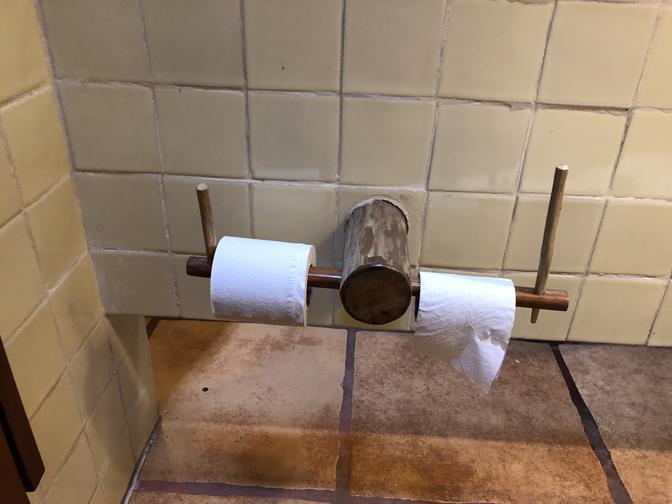Public toilets designed to be clean, airy and user-friendly
Have you ever sought tourist information at a public toilet? Not likely. That is likely to change soon. A plaza near Charminar in Hyderabad will have a public toilet called the Urban Loo that will also serve as a tourist information centre. The plaza, which will also have unisex toilet spaces has an ‘open concept’ to make people a part of the plaza,” says Kalpit Ashar, of Mad(e) in Mumbai that is executing this project. Founded and managed by architects Kalpit Ashar and Mayuri Sisodia, Mad(e) in Mumbai (MiM) has been commissioned by the Greater Hyderabad Municipal Corporation (GHMC), to build these Urban Loos at 53 sites including a crematorium, bus stop and railway station.
When the first Urban Loo was opened for use at the exit gate of the Secunderabad Railway Station, users were taken aback at how it had been designed and built. A shopkeeper in the area describes it as the best thing anyone could have asked for.
Kalpit and Mayuri started rethinking public toilet design four years ago when the Swacch Bharat Abhiyan was in focus in the country. They observed that while people cleaned and tidied up their streets, beaches and footpaths, public toilets were ignored. “Public toilets continue to be filthy,” says Kalpit. “Whenever new toilets were built to ‘improve’ public loos, it was just a cosmetic change.”

The team at MiM worked to create a toilet manifesto after considerable research and design development and then reached out to various governments. Kalpit says, “Public toilets are important landmarks of an emerging landscape in any modern city. They speak volumes of who we are as a society. Providing this basic but essential public convenience with dignity and comfort is the key to raising health, hygiene and safety standards in any city. With this vision, we named the project as The Urban Loo, which is a new paradigm for good-quality public toilets for urban India.”
MiM ‘s mission is “To revolutionise the common man’s experience of using public toilets. In today’s urban lifestyle, when most people spend the majority of their time outdoors, the need for modern, hygienic and mult-ipurpose public toilets is critical,” shares Kalpit.
What makes the Urban Loo space different from existing public loos? “We provide state-of-the-art public toilets that are aesthetically designed, energy-efficient, safe and provide ‘good’ experience to all users. While designing toilets, we first look at the typology of the toilet, which means approach/access to these places should be easy. The moment access is a hindrance (because of the place or the way it is built), it becomes dysfunctional.”
To cite an example, Kalpit points out, “the Urban Loo outside Secunderabad Railway Station caters to a large volume of people exiting the station. Taking inspiration from old clock towers, it is designed as an urban landmark with a city clock to build a connection with people in Secunderabad. The idea is to change the perception of a public toilet from a dirty, smelly and unhygienic building to a memorable, joyful and airy one. Its porous façade enables plenty of sunlight and natural cross-ventilation that help in removing the foul smell. Due to skylights provided in the toilets, there is no need for electrical lights during the day. Toilets are lit and airy throughout the day. They are also fitted with shower facilities and waterless/odourless urinals.”
MiM has so far built toilets at Mumbai highways and seven major cities of Rajasthan. In Jaipur, the team built a loo in the theme of an amphitheatre.
What about the upkeep of the places after they are built? Kalpit says, “The idea is to make something so good that no one should feel like vandalising it or leaving it dirty.”








